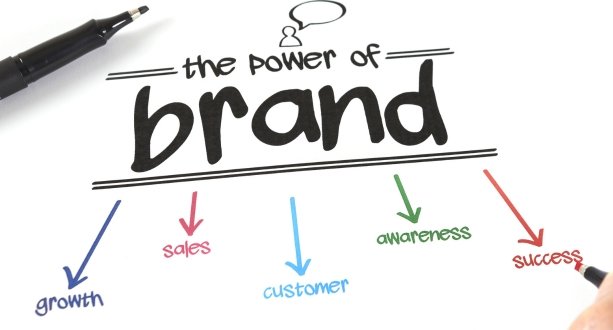The role of packaging in brand recognition
Packaging is an essential element of product branding and marketing. It is the first thing that a customer sees when they come in contact with a product. Packaging plays a vital role in creating brand recognition as it serves as the face of the brand, making it an important marketing tool for businesses. Packaging is not just a way to protect and preserve a product, but it is also an opportunity to promote the brand, increase brand awareness and differentiate the product from competitors.
Packaging is a powerful marketing tool that communicates a brand’s message, values, and personality to the customer. It creates an emotional connection with the customer and influences their purchasing decision. Packaging can evoke feelings of excitement, luxury, and quality, or it can convey simplicity, practicality, and affordability. The packaging design can also reflect the brand’s identity, whether it is traditional, modern, or innovative, and differentiate it from its competitors.
Brand recognition is the degree to which a brand is known by customers and how easily it can be recognized. Brand recognition is essential for the success of a brand, as it influences customer loyalty, purchasing decisions, and market share. Packaging plays a significant role in creating brand recognition as it is the first point of contact between the customer and the product. A well-designed and unique packaging can help a brand stand out and be easily recognized by customers.
Packaging can also create brand consistency across different products and product lines. A consistent packaging design can create a visual identity for the brand, making it easier for customers to identify and differentiate the brand from its competitors. A consistent packaging design can also create a sense of trust and reliability with the customer, as they know what to expect from the brand.
In addition to creating brand recognition, packaging can also influence customer perceptions of the product’s quality and value. A high-quality and well-designed packaging can suggest that the product inside is also of high quality and value. Conversely, a poorly designed packaging can suggest that the product inside is of low quality and value. Packaging can also influence the customer’s perception of the product’s price. A luxurious and premium packaging can justify a higher price point, while a simple and functional packaging can suggest a lower price point.
Packaging can also play a role in creating a memorable customer experience. A unique and creative packaging design can create a positive and memorable experience for the customer, which can increase brand loyalty and word-of-mouth marketing. A memorable packaging design can also encourage customers to share their experience with others, which can increase brand awareness and customer reach.
What is the role of the packaging?
Packaging is an essential component of the manufacturing and marketing process of a product. It is the science, art, and technology of enclosing, protecting, and preserving a product from damage and contamination during storage, transportation, and distribution. Packaging serves as a protective barrier between the product and the environment, safeguarding its quality and integrity until it reaches the end-user. In addition to protecting the product, packaging also plays a critical role in the marketing and promotion of the brand.
The primary role of packaging is to ensure the safety and quality of the product. Packaging materials are selected based on the properties of the product, such as its sensitivity to light, moisture, and temperature, and the nature of the transport and storage conditions. For example, a fragile product may require cushioning materials such as foam or bubble wrap to prevent damage during shipping, while a perishable food item may need airtight packaging to prevent spoilage. The packaging material must be able to withstand the stress and strain of handling, transport, and storage, while also protecting the product from external contaminants such as dirt, dust, and microorganisms.
In addition to ensuring product safety, packaging also plays a critical role in product promotion and marketing. Packaging is often the first point of contact that a consumer has with a product, and it can influence their purchasing decision. Packaging design can communicate important information about the product, such as its brand, features, and benefits. For example, a package for a premium product may be designed with high-quality materials and sophisticated graphics to convey a sense of luxury and exclusivity. On the other hand, a package for a value-oriented product may use simple and cost-effective materials to convey affordability and accessibility.
Packaging also serves as a branding tool, allowing companies to differentiate their products from competitors and build brand recognition. Packaging design can incorporate a company’s logo, color scheme, and other visual elements to create a consistent and recognizable brand identity. This can help to build customer loyalty and increase brand awareness, leading to increased sales and revenue.
Furthermore, packaging can also be used to comply with regulatory requirements, such as labeling and environmental regulations. Packaging must include information such as ingredients, nutritional information, and warnings, which may be required by law or industry standards. In addition, packaging can be designed to minimize the environmental impact of the product by reducing waste, using sustainable materials, and encouraging recycling.
Packaging plays a critical role in the manufacturing, marketing, and distribution of a product. It ensures the safety and quality of the product while also serving as a branding tool and compliance with regulatory requirements. Packaging design must take into account the properties of the product, transport and storage conditions, and the needs and preferences of the target market. By understanding the role of packaging in the product life cycle, companies can create packaging solutions that meet their business objectives and deliver value to their customers
Conclusion
In conclusion, packaging plays a crucial role in creating brand recognition. A well-designed and unique packaging can create a visual identity for the brand, communicate its message and values, influence customer perceptions of the product’s quality and value, and create a memorable customer experience. A consistent packaging design can also create brand consistency across different products and product lines, making it easier for customers to identify and differentiate the brand from its competitors. Therefore, businesses should prioritize packaging design and ensure that it aligns with their brand strategy and values.
Frequently Asked Questions
Effective packaging design for brand recognition should be visually appealing, consistent with the brand’s identity, communicate the product’s benefits, and be memorable. It should also be practical and functional, providing adequate protection and ease of use.
While packaging can certainly contribute to brand recognition, it is typically not enough on its own. A strong brand identity and consistent messaging across all touchpoints are also important in building brand recognition.
Packaging can be used to reinforce a brand’s message by incorporating elements such as colors, fonts, and imagery that are consistent with the brand’s identity and values. It can also communicate the product’s benefits and unique selling proposition in a clear and compelling way.
Packaging can play a significant role in influencing purchase decisions, as it can attract attention, communicate a brand’s personality and values, and differentiate it from competitors. Practical considerations such as ease of use and product protection can also influence purchase decisions.
Packaging can impact a customer’s perception of quality by communicating a brand’s attention to detail and commitment to providing a premium product. High-quality materials and design can signal that the product inside is also of high quality.




